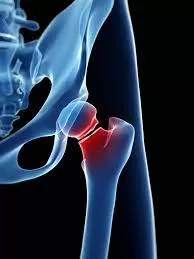A recent study published in JAMA Network Open has found that patients in Victoria, Australia, who were prescribed gabapentinoids faced a 30% higher likelihood of experiencing a hip fracture within two months of starting the medication. The findings raise concerns about the potential risks associated with these commonly used drugs, particularly among aging populations.
Gabapentinoids, often prescribed as a safer alternative to opioids for neuropathic pain, have seen a significant rise in use. In Australia, prescriptions for these medications surged eightfold between 2012 and 2018, with one in seven Australians aged 80 and older receiving a gabapentinoid during that period. Today, they rank among the ten most subsidized medications in the country.
Study Findings
The research analyzed data from 28,293 patients who had sustained hip fractures over a five-year period. Results indicated a clear association between gabapentinoid use and an increased risk of hip fractures, with the risk being particularly pronounced among frailer individuals and those with chronic kidney disease.
Experts emphasize that physicians should weigh these risks carefully before prescribing gabapentinoids, particularly for older adults at higher risk of falls and fractures. The study suggests that increased awareness and additional precautions may be necessary to mitigate potential harm.
Medical Guidance
Despite the concerning findings, researchers stress that patients should not abruptly discontinue gabapentinoid treatment without consulting a healthcare professional. Adjusting medication regimens should always be done under medical supervision to avoid withdrawal symptoms or worsening of underlying conditions.
Conclusion
The study highlights the importance of careful prescribing practices and ongoing patient monitoring when using gabapentinoids in elderly populations. Healthcare providers may need to consider alternative treatments or implement additional safety measures to reduce the risk of falls and fractures in vulnerable patients.
Disclaimer: This article is for informational purposes only and should not be considered medical advice. Patients are encouraged to consult their doctor or pharmacist before making any changes to their medication regimen.
(Source: News-Medical.net)












